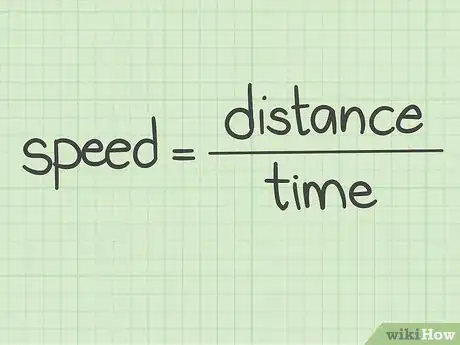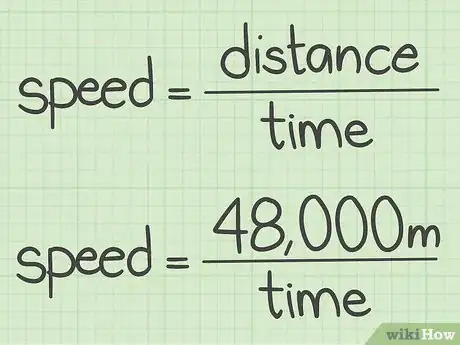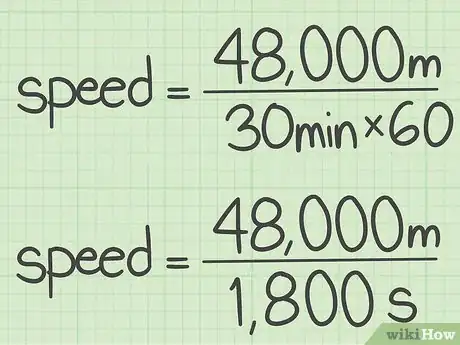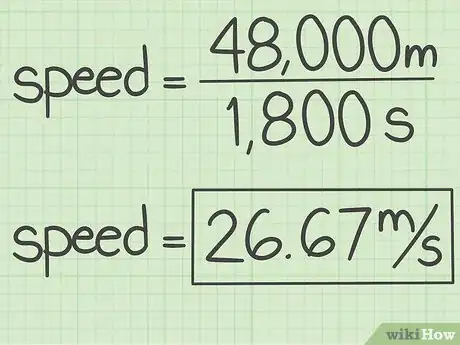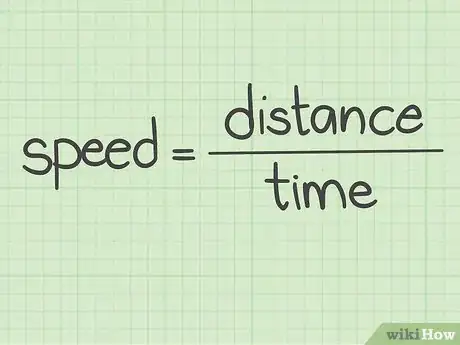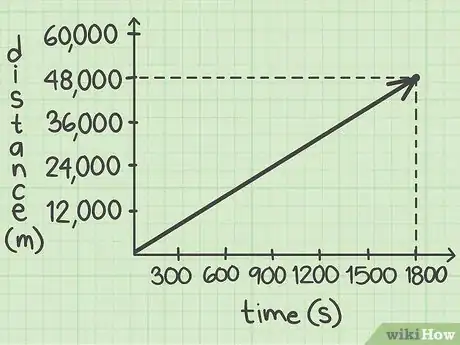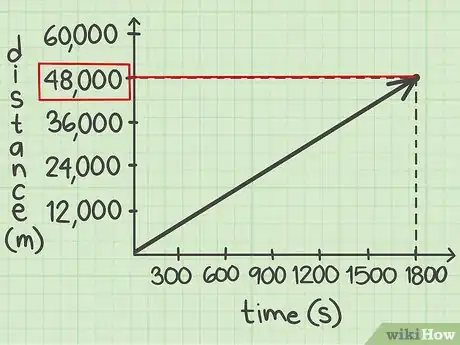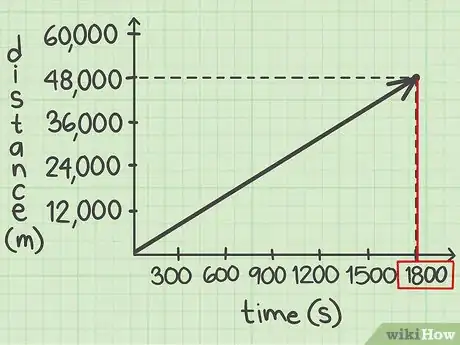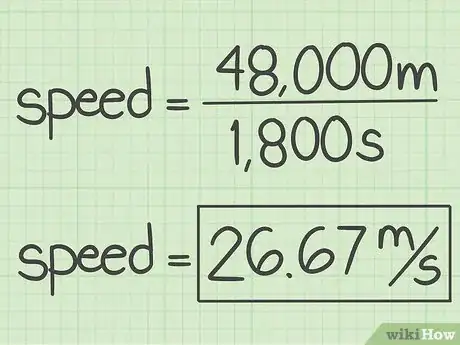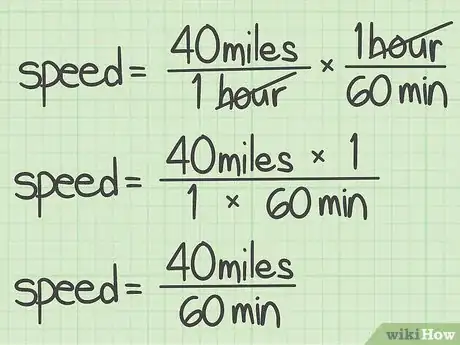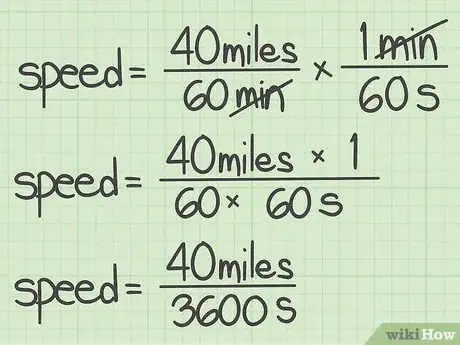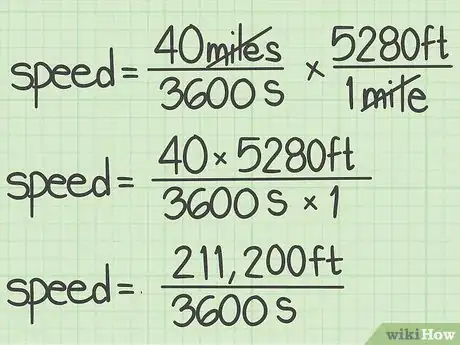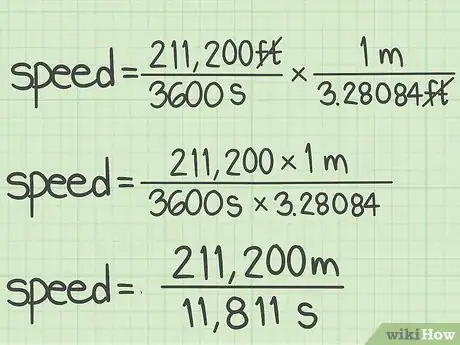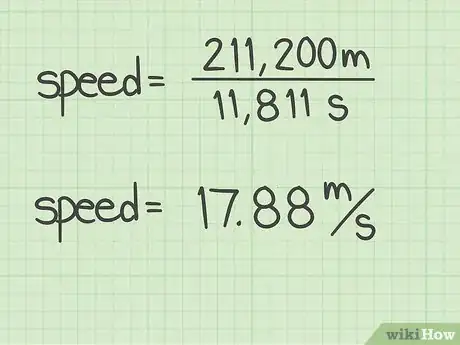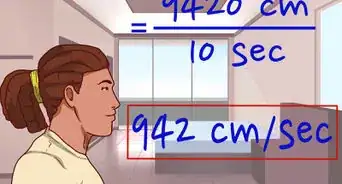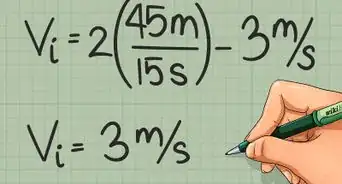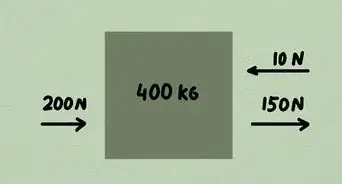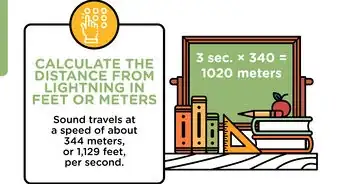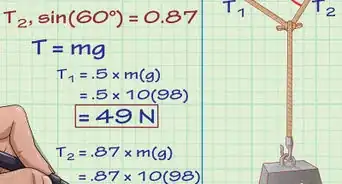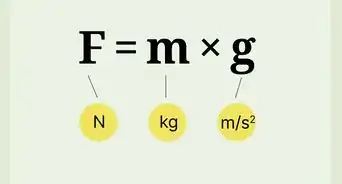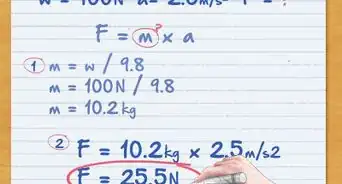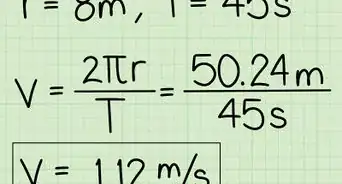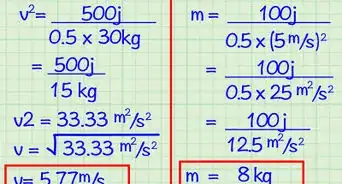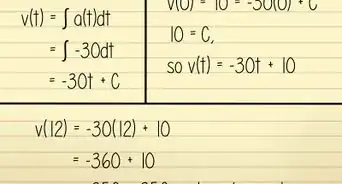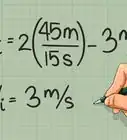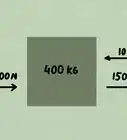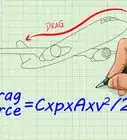This article was co-authored by wikiHow Staff. Our trained team of editors and researchers validate articles for accuracy and comprehensiveness. wikiHow's Content Management Team carefully monitors the work from our editorial staff to ensure that each article is backed by trusted research and meets our high quality standards.
There are 11 references cited in this article, which can be found at the bottom of the page.
This article has been viewed 224,562 times.
Learn more...
Meters per second is a rate of speed, similar to miles per hour. Finding the speed is easy if you are given the distance in meters and the time in seconds. You can use the formula to find the rate. You can also determine speed by interpreting a distance-time graph. Sometimes, however, you will be given a rate of speed in other units, such as miles per hour. In this instance, you need to set up a series of ratios to convert from different units until you reach the speed in terms of meters per second.
Steps
Calculating Speed Given Distance and Time
-
1Set up the formula for speed. The formula is .[1] The distance refers to how far something or someone traveled, and the time refers to how long it took to travel that distance.
-
2Plug the total distance into the formula. This information should be given in meters. Sometimes, however, you might need to calculate the distance traveled using information provided in the problem, or you might need to convert another unit, such as miles, feet, or kilometers, into meters.
- For example, you might know that Henry drove his car for 48,000 meters. So, your formula will look like this: .
Advertisement -
3Plug the total time into the formula. Sometimes this information will be given; sometimes you need to calculate the time given a beginning and ending time. Find the difference between the beginning and ending time to find the total time it took to travel. In these instances, you will likely need to convert minutes traveled into seconds traveled by multiplying the number of minutes traveled by 60.[2]
- For example, you might know that Henry began driving at 6:00p.m. He drove 48,000 meters, and arrived at his destination at 6:30 p.m. The difference between 6:00p.m. and 6:30p.m. is 30 minutes. To find the number of seconds, calculate . So, Henry traveled for 1,800 seconds. You formula should look like this: .
-
4Divide the distance by the time. This will give you the speed in meters per second.[3]
- For example, .
Calculating Speed Using a Distance-Time Graph
-
1Set up the formula for speed. The formula is .[4]
-
2Acquire your distance-time graph. This should be presented to you in the form of a coordinate plane, and the graph should have at least one line plotted. The line represents the distance and time traveled by a single person or object. If the graph has multiple lines, each line represents a different person or object.
- The first endpoint of the line signifies when the person or object started moving. The second endpoint of the line signifies when the person or object stopped moving.
-
3Interpret the x-axis and the y-axis of the graph. The x-axis is the horizontal axis, and it indicates the time spent travelling. The y-axis is the vertical axis, and it indicates the distance traveled.[5] If the units of the graph are not listed in terms of meters per second, you will need to convert the units after you find the speed.
-
4Calculate the distance traveled by the person or object. To calculate the distance, find the appropriate line on the graph and note the point where the line ends. Find the y-coordinate of this point by moving your finger horizontally to the y-axis. This will show you the distance travelled.[8] If the line does not start at the (0, 0) point, you need to find the distance by subtracting the y-values of the two endpoints of the line.
- For example, if the line showing the distance and time traveled by Henry begins at (0, 0) and ends at the point (1,800, 48,000), the number of meters traveled is 48,000.
-
5Calculate the time spent travelling by the person or object. To calculate the time, go back to the point where the line ends. Find the x-coordinate of this point by moving your finger vertically to the x-axis. This will show you the time spent traveling.[9]
- For example, if the line showing the distance and time traveled by Henry ends at the point (1,800, 48,000), the number of seconds traveled is 1,800.
-
6Divide the distance by the time. Plug the two values into the formula and divide. This will give you the speed. If the units on the graph were listed in units other than meters per second, you will need to convert the units to find the speed in meters per second.[10]
- For example, .
Converting Miles Per Hour to Meters Per Second
-
1Calculate the speed in miles per hour. Do this using the formula .[11] Restate the speed as a ratio of miles over 1 hour.
- For example, if Becky drove 50 miles in 1.25 hours at a constant speed, you would find the speed by calculating . As a ratio, you would state the speed as .
-
2Convert miles per hour to miles per minute. To do this set up fractions to cancel the units. To cancel units, you need to multiply two fractions that share one unit, but not the other. In order for the unit to cancel, it needs to be in the numerator of one fraction, and the denominator of the other fraction.[12] Since there are 60 minutes in 1 hour, you would multiply the speed in miles per hour by the fraction .
- For example:
- For example:
-
3Convert miles per minute to miles per second. Do this just as you did for the previous conversion. Multiply the two ratios to cancel units.[13] There are 60 seconds in 1 minute, so your second fraction will be .
- For example:
- For example:
-
4Convert miles per second to feet per second. There are 5,280 feet in a mile.[14] Thus, you will multiply the ratio of miles per second by .
- For example:
- For example:
-
5Convert feet per second to meters per seconds. There are 3.28084 feet in 1 meter.[15] So, you will multiply the ratio of feet per second by .
- For example:
.
- For example:
-
6Divide the numerator by the denominator. This will give you the speed in meters per second.[16]
- For example, . So, Becky drove at a rate of 17.88 meters per second.
Community Q&A
-
QuestionWhat is the speed of six meters in three minutes?
 ChristopherTop AnswererSince speed is the non-vectorial quantity of distance over time, it would be two meters per minute, given that six meters divided by three minutes equals two meters per minute.
ChristopherTop AnswererSince speed is the non-vectorial quantity of distance over time, it would be two meters per minute, given that six meters divided by three minutes equals two meters per minute. -
QuestionWhat is 3x10^8 meters per second?
 Community AnswerIt's a good approximation of the speed of light. Use 299,792,458m/s if better accuracy is needed.
Community AnswerIt's a good approximation of the speed of light. Use 299,792,458m/s if better accuracy is needed. -
QuestionI don't get how to find m/s with a graph. Can you clarify?
 Community AnswerA distance-time graph shows distance along the y-axis and time along the x-axis. The graph will have a line representing the distance and time traveled for one person or thing. The coordinates of the line's endpoint will indicate the total distance traveled, and the total time traveled. Use the formula speed = distance/time to calculate the speed.
Community AnswerA distance-time graph shows distance along the y-axis and time along the x-axis. The graph will have a line representing the distance and time traveled for one person or thing. The coordinates of the line's endpoint will indicate the total distance traveled, and the total time traveled. Use the formula speed = distance/time to calculate the speed.
References
- ↑ http://www.mathsisfun.com/measure/speed-velocity.html
- ↑ http://www.calculatorsoup.com/calculators/conversions/time.php
- ↑ https://www.bbc.co.uk/bitesize/topics/z83rkqt/articles/zhbtng8
- ↑ http://www.mathsisfun.com/measure/speed-velocity.html
- ↑ http://www.bbc.co.uk/schools/gcsebitesize/science/add_aqa/forces/forcesmotionrev1.shtml
- ↑ http://www.bbc.co.uk/schools/gcsebitesize/science/add_aqa/forces/forcesmotionrev1.shtml
- ↑ https://www.youtube.com/watch?v=l93-BkAJ3UY
- ↑ https://www.youtube.com/watch?v=l93-BkAJ3UY
- ↑ https://www.youtube.com/watch?v=l93-BkAJ3UY
- ↑ https://gcsephysicsninja.com/lessons/length-time-motion/speed-from-distance-time-graph/
- ↑ http://www.mathsisfun.com/measure/speed-velocity.html
- ↑ http://www.purplemath.com/modules/units.htm
- ↑ https://sciencing.com/miles-meters-per-second-conversion-7184677.html
- ↑ http://www.rapidtables.com/convert/length/how-many-feet-in-mile.htm
- ↑ http://www.rapidtables.com/convert/length/meter-to-feet.htm
- ↑ https://sciencing.com/miles-meters-per-second-conversion-7184677.html
- ↑ http://www.physicsclassroom.com/class/1DKin/Lesson-1/Speed-and-Velocity
About This Article
To calculate speed in metres per second, start by determining both the distance covered and the amount of time it took to cover that distance. If you need to calculate the time, subtract the starting time from the end time, taking care to express the amount of time as seconds instead of minutes or hours. Then, divide the distance travelled in metres by the time in seconds to get the speed. For tips on converting miles per hour to metres per second, keep reading.

